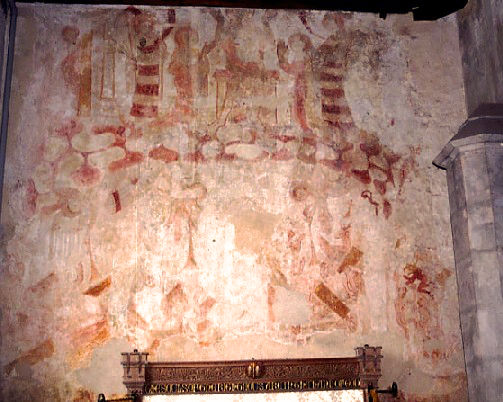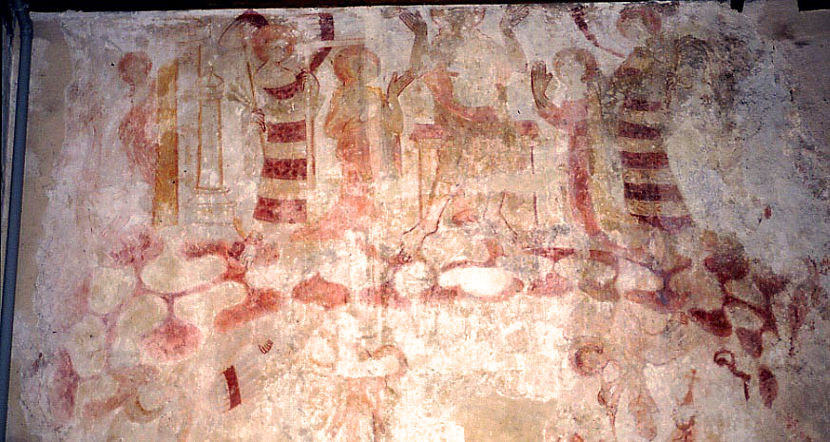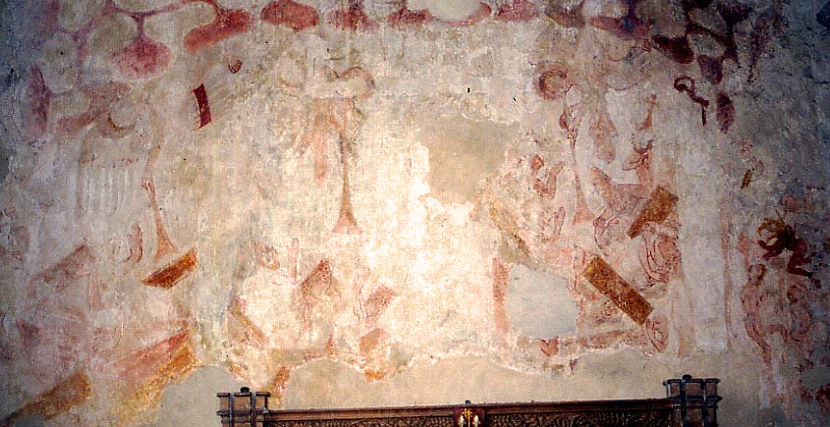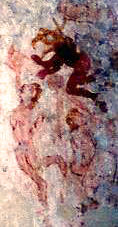Newington-next-Sittingbourne, Kent (†Canterbury) c.1315-1330
Doom

A large and quite early Doom with some unusual features. For one thing, it is not in the standard position over the chancel arch, but at the east end of the north aisle, where there was once an altar (the present one, partly visible here, is modern).
At the top centre, the Judging Christ sits on (or stands in front of) a throne, rather than sitting on a rainbow, as is far more common. Instead of the rainbow, his feet rest on a curving band of clouds, showing quite clearly as roughly oval white shapes on a red ground. He holds up his hands to display his wounds, and flanking him are the Virgin Mary (left) and John the Evangelist (right), with the gate of Heaven and (probably) a faint St Peter at the far left (detail below).
To left and right beyond the Virgin and John are two angels with Instruments of the Passion – the Cross, Lance and Nails clear enough on the left, the Scourge less clear in the left hand of the angel on the right. The very pronounced horizontal stripes on the robes of these angels recall those of an angel in the Annunciation/Visitation at Newton Green in Suffolk. EW Tristram dated that painting to around 1313, and I think the Newington Doom can be assigned to the same date or perhaps a little later.



Below the arch of clouds (detail above), the resurrection of the dead takes place. Not much detail is visible now, but the oblong dark yellow shapes are tomb lids, pushed aside as souls rise from their graves, and here and there, especially on the right, small figures can be seen, some with beseeching hands held in prayer, one at the lower right leaning on an elbow and looking upwards.
At the right hand edge of the painting, two small naked figures (detail, right below) are struggling to rise, impeded by a particularly malign-looking beaked devil above them. The Jaws of Hell must once have been here, with these souls trying to escape them – Tristram could see traces of the jaws¹, but no more than a hint of the lower one (complete picture, top of page) remains now.
There are several other paintings at Newington; a fragmentary but interesting Nativity (with Joseph included), various figures of saints in window-splays, and a very faint St Christopher.
¹ Tristram II, p. 226